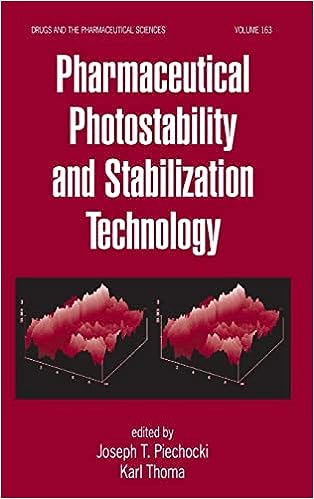Understanding TGA Stability Testing Guidelines: Australian Pharmaceutical Standards
Introduction
The Therapeutic Goods Administration (TGA) is Australia’s regulatory authority for therapeutic goods, ensuring that pharmaceutical products meet stringent safety, quality, and efficacy standards. Stability testing is a critical component of TGA regulatory requirements, providing evidence to support shelf life, storage conditions, and product performance. This article provides an in-depth look at TGA stability testing requirements, key guidelines, and practical insights for compliance in the Australian pharmaceutical market.
Overview of TGA Stability Testing Requirements
Stability testing under TGA guidelines is aligned with international standards, particularly ICH Q1A(R2). The
- Determine Shelf Life: Establish the time during which the product maintains its intended quality under specified conditions.
- Ensure Storage Suitability: Validate recommended storage conditions to ensure product integrity.
- Support Regulatory Approvals: Provide stability data for product registration and post-approval changes.
Key Elements of TGA Stability Testing
1. Climatic Zone III and IV Requirements
Australia’s diverse climatic conditions fall under Climatic Zone II (subtropical) and parts of Zone IVa (hot and humid). Stability studies must reflect these environments:
- Long-Term Testing: 30°C ± 2°C / 75% RH ± 5% RH for Zone IVa.
- Accelerated Testing: 40°C ± 2°C / 75% RH ± 5% RH for a shorter duration.
Tip: Tailor stability protocols to the product’s intended distribution regions within Australia.
2. Types of Stability Studies
TGA mandates different types of stability studies depending on the product’s lifecycle stage:
- Initial Studies: Conducted during product development to establish preliminary stability data.
- Registration Studies: Required for product registration, covering long-term and accelerated conditions.
- Ongoing Studies: Post-approval stability monitoring for commercial batches.
3. Critical Quality Attributes
Stability testing evaluates critical quality attributes (CQAs) to ensure product performance over time:
- Chemical Stability: Assay, impurities, and degradation products.
- Physical Stability: Appearance, dissolution, and moisture content.
- Microbial Stability: Sterility and preservative efficacy.
Tip: Use validated analytical methods to monitor CQAs consistently.
4. Container-Closure Systems
The interaction between the product and its packaging must be evaluated to ensure stability. TGA requires:
- Material compatibility studies to prevent contamination or degradation.
- Testing for light and moisture protection in sensitive products.
Tip: Choose packaging materials that align with Australian environmental conditions and regulatory expectations.
5. Data Requirements for Regulatory Submissions
Stability data must be comprehensive and include the following:
- Details of testing protocols, including storage conditions and sampling intervals.
- Results from long-term and accelerated studies, highlighting any significant changes.
- Justifications for proposed shelf life and storage recommendations.
Tip: Use TGA-preferred templates for consistency in submissions.
Challenges in Meeting TGA Stability Testing Requirements
Compliance with TGA stability testing guidelines can present several challenges:
- Regional Climate Variability: Products distributed across different climatic zones may require additional studies.
- Resource Constraints: Smaller manufacturers may lack the infrastructure to conduct extensive stability studies.
- Regulatory Complexity: Aligning stability protocols with both TGA and international guidelines can be complex.
Tip: Partner with local contract research organizations (CROs) to overcome resource and expertise limitations.
Best Practices for Compliance with TGA Stability Testing Guidelines
To ensure successful compliance with TGA requirements, manufacturers should adopt the following best practices:
- Develop Comprehensive Protocols: Include all required study types and tailor them to the Australian market.
- Validate Analytical Methods: Ensure methods are precise, accurate, and reproducible under TGA standards.
- Invest in Advanced Technology: Use automated stability chambers and monitoring systems to maintain consistency.
- Engage with Regulators: Maintain open communication with TGA representatives to address specific requirements and queries.
- Monitor Post-Approval Stability: Implement ongoing studies to confirm product quality after market entry.
Emerging Trends in TGA Stability Testing
Several trends are shaping the future of stability testing in Australia:
- Sustainability: Increased focus on eco-friendly packaging materials and energy-efficient stability chambers.
- Digital Transformation: Adoption of electronic data management systems to enhance compliance and streamline reporting.
- AI Integration: Use of predictive modeling tools to forecast stability outcomes and reduce reliance on long-term studies.
Impact of TGA Stability Guidelines on the Pharmaceutical Industry
TGA stability testing requirements play a vital role in ensuring the quality of pharmaceutical products in the Australian market. Their impact includes:
- Enhanced Product Quality: Rigorous testing ensures that drugs remain effective and safe throughout their lifecycle.
- Streamlined Approvals: Clear guidelines facilitate smoother regulatory submissions and faster market entry.
- Global Alignment: Harmonization with international standards supports multi-regional submissions and global trade.
Conclusion
TGA stability testing guidelines are critical for maintaining the safety, efficacy, and quality of pharmaceutical products in Australia’s unique climatic conditions. By adhering to these requirements, manufacturers can ensure regulatory compliance and successful market access. With advancements in technology and a growing emphasis on sustainability, stability testing practices in Australia will continue to evolve, supporting the dynamic needs of the pharmaceutical industry.

